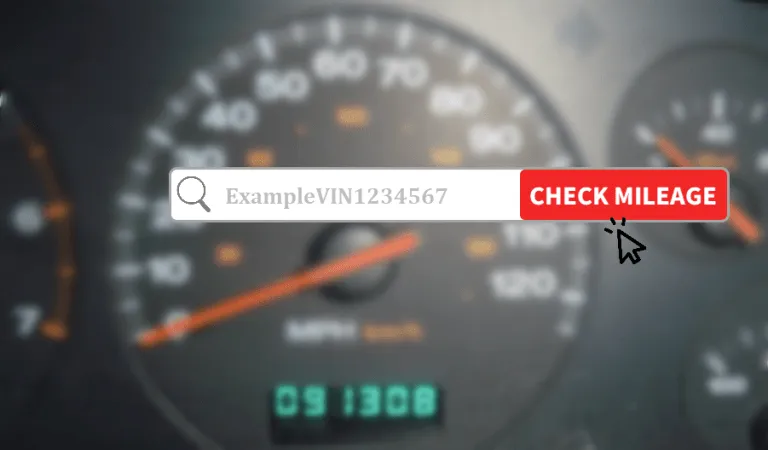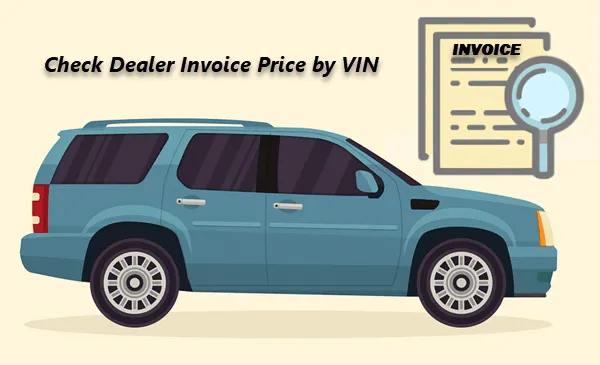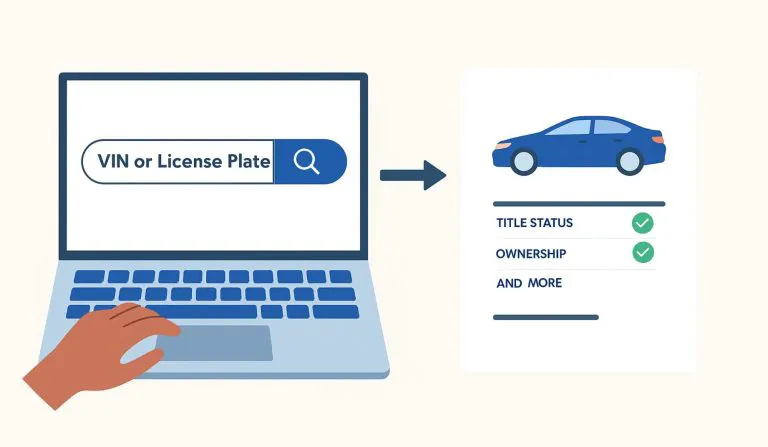How to Check a Car’s (True) Mileage by VIN
Not sure if a car's mileage has been rolled back? Here are 4 smart ways to find out.

Maybe you’ve come across a decades-old used car with surprisingly low mileage and find it hard to believe. Or maybe you’ve seen a vehicle listed with mileage that just doesn’t seem to match its overall condition. You just can’t help wondering if the mileage has been tampered with. That’s a completely valid concern. Odometer fraud is all too common1 and can lead buyers to overpay or, worse, end up with an unsafe vehicle. In this guide, we’ll walk you through some of the most effective ways to check a car’s real mileage and verify whether the odometer may have been rolled back. Sometimes it’s as easy as typing in the VIN and hitting search. Let’s dive in!
Key takeaways
🔘 Checking the VIN report is the easiest and most reliable way to verify mileage. Bumper is a cost-effective option.
🔘 You can also ask the seller for relevant documents, get a mechanic to evaluate the overall condition, or use a dedicated scanner tool.
🔘 Lower mileage isn’t always better, but mileage does affect a car’s resale value, so it’s worth checking.
How mileage gets faked?
Before we dive into how to spot odometer fraud, you might want to know how shady sellers manage to alter a vehicle’s mileage. The truth is, you don’t really need to be a mechanic to recalibrate a car’s odometer.
For starters, traditional mechanical odometers could be physically rolled back by tampering with the gears. Today’s digital odometers are harder to manipulate, but rollback is still possible, as long as you have the right tools. Some use software to reprogram the odometer, while others simply switch it with one that’s still young. For example, someone might pull a cluster showing 61,000 miles from a wrecked car that’s been sitting in a junkyard for years and install it in a car with 230,000 miles.
Method 1. Pull a vehicle history report
Checking a vehicle history report is one of the most reliable ways to spot odometer rollback. The odometer reading might lie, but what’s recorded in official reports usually doesn’t.
How do vehicle history reports track odometer readings
Vehicle history reports collect mileage data from various trusted sources, including:
- DMV title transfer and registration renewal records
- Emissions and safety inspections
- Service and maintenance records
- Listing and auction history
If an earlier record shows a higher mileage than a later one, it’s a clear red flag for rollback. Some reports even flag suspicious mileage jumps automatically. Some reports also include visual charts that clearly show how the mileage has changed over time.
Read more: Where Do VIN Lookup Services Get Their Data – And How
To help make your decision easier, we’ve summarized two types of providers you might consider. The first category is known for affordability, with Bumper as a typical example. The second includes industry leaders like CARFAX, which tend to be more expensive. Here’s a closer look at both options:
| Features | Group A. Budget-Friendly Services | Group B. Reputable industry leaders |
|---|---|---|
| Recommended option | Bumper | CARFAX |
| Affordable | ✅ $27.99/month for 50 reports | ❌ $44.99/single report |
| Good for multiple reports | ✅ | $109.99/4 reports |
| Approved NMVTIS data provider | ✅ | ❌ |
| Data from both government and industry partners | ✅ | ✅ |
| Extensive list of service history | ❌ | ✅ |
| Detailed sales listing history | ✅ | ❌ |
| Reputation | Growing, less well-known | Well-known |
Bumper vehicle history report
For individual buyers, budget-friendly VIN check services like Bumper can be a decent choice. Bumper is one of the few NMVTIS-approved providers, and it offers reasonable pricing — $27.99/month for up to 50 reports, with a low-cost 7-day trial available.
How to get a Bumper vehicle history report
Running a VIN lookup with Bumper is pretty easy. All you need to do is go to the Bumper VIN Lookup page, enter the VIN of the vehicle, and hit SEARCH. (Where to find the VIN?)
Then Bumper will check the VIN against the millions of records in its database. (You’ll need to purchase a subscription that fits your needs to access the full report.) Once it locates a match, it will generate a detailed report for you.
Note: if the VIN is not available, you can also run a check using the license plate number and the state it’s registered in.
Where to look for mileage inconsistency
✅ Last reported mileage
Bumper reports include multiple sections where you can check a vehicle’s mileage and how it has changed over time. First, at the very top of the report in the Overview section, you’ll find a field called Last Reported Mileage.
✅ Title records
Odometer readings are typically collected during title transfers or annual vehicle registrations. That’s why the title record section often includes a series of mileage records. By checking these alongside the dates, you can see whether the mileage has increased steadily and consistently over time.
✅ Possible sales listings
Another place to check mileage is the listing history. Whether a car was sold by a dealer, listed on Craigslist, or put up for auction, the mileage usually had to be disclosed. And that data often makes its way into vehicle history reports.
While this information isn’t as official as title records, it’s still useful for cross-checking mileage. In some cases, you can even click on it to view the original listing page (with photos and vehicle details).
In addition to odometer readings, Bumper provides a wide range of information about the vehicle’s history and specs, as shown below:
It helps you feel more confident before making such an important decision.
CARFAX vehicle history report
CARFAX and AutoCheck are both well-established and reputable vehicle history report providers. However, when it comes to mileage checks, we believe CARFAX is generally the better choice. That’s mainly because CARFAX has an extensive network of partnered service centers, likely the most comprehensive among all providers. Since odometer readings are often recorded during routine service or maintenance, these service records serve as an important source of mileage data. They also help supplement official records from DMVs and other government agencies, giving you a more complete and reliable mileage history.
Flag mileage inconsistency automatically
CARFAX doesn’t just collect data, it also analyzes the information to help you better spot potential issues. For example, it can flag suspicious mileage jumps. In the sample report below, the last column clearly marked a Mileage Inconsistency, because the vehicle’s mileage was recorded as 213,207 on 07/15/2017, but five years later (11/16/2022), it suddenly dropped to just 12,542.
Like many other VIN lookup services, CARFAX lets you search by either VIN or license plate. Since the VIN is a more precise and unique identifier, it’s usually better to use that if you have it. Just enter the required information and click the Get CARFAX Report button. You’ll then be prompted to choose one of the available packages. After completing your payment, your report will be ready to view.
How to read a CARFAX report
At the very beginning of the CARFAX report, there’s a summary section. In the Additional History area, you’ll see whether any odometer issues were flagged under each owner (typically marked as either “No Issues Indicated” or “Mileage Inconsistency).
For example, if the report shows a mileage inconsistency under Owner 3, you can scroll down to that owner’s Detailed History section later in the report to see exactly what happened.
As you can see, CARFAX is on the pricier side: a single report costs $44.99 already. That makes it a better fit when you’ve already narrowed down your choice to a specific vehicle and want to double-check the mileage and make sure there are no major red flags. But if you’re still in the browsing stage and need to look up reports for multiple cars, Bumper offers much better value for money.
Watch out for clerical errors
It’s important to note that the odometer readings in the report ultimately come from human input, and human errors do happen. For example, in the case shown below, the vehicle’s mileage had been steadily increasing until March 2017, when a service center reported an odometer reading of 474,747. That number was significantly higher than the previous record and more than double the reading reported just four months later. As a result, the number is highly suspicious, and even CARFAX noted that “this entry may just be a clerical error”. In such cases, it’s best to ask the seller or a mechanic for further clarification.

Method 2. Ask the owner for mileage-related documentation
Check the title and compare the recorded mileage with what’s shown on the vehicle’s odometer. Also ask for maintenance and inspection records — these often include mileage readings at the time of service and can help you spot any suspicious gaps or rollback signs. Consistent mileage records across documents are a good sign, while missing or inconsistent entries may be cause for concern.
In fact, even if you’re not specifically concerned about odometer fraud, it’s still a good idea to ask the seller for these documents. They can help you verify whether the seller is the legitimate owner, check if the car has been properly maintained, and see whether it has received regular inspections over the years.
Method 3. Look for physical indicators of mileage on the car
Besides checking the vehicle history report to verify mileage, the car itself can offer valuable clues. Excess wear may suggest higher mileage.
- One of the most common is the condition of the brake pedal—it’s often the best way to tell if a vehicle has rolled over. Look closely for wear, especially at the corners. (Just as one car owner shared, “My 72 GTO had ‘45,000 miles’ but the brake and gas pedal pads were heavily worn. Definitely 145,000.”3)
- Another good indicator is the driver’s seat bolster. Excessive wear on the side of the seat (especially if it doesn’t match the claimed mileage) can suggest the car has more miles than reported.
- Also take a look at the steering wheel. Check if it’s noticeably worn down, shiny, or faded.
In addition, odometer digits that are misaligned can be a sign of tampering in older cars.
Method 4. Check car mileage with OBD-II scanners
Some vehicles store mileage in the ECU (Engine Control Unit) or other modules. Even if the odometer has been rolled back, the ECU still holds the original mileage. In such cases, a scanner can reveal the discrepancy. It’s a non-invasive method and fairly easy with the right tool.
That said, getting an OBD-II scanner does come at a cost. Some models are expensive, and even the more affordable ones typically start at over $100. There are many options on the market, and if you’re not sure which type of OBD-II scanner to buy, you can check out this guide for recommendations.
Please note that not all vehicles store mileage in the ECU. Many don’t, especially older models or certain brands.
Frequently asked questions
1. Does unusually low mileage always mean issues?
Not necessarily. You might come across a nearly 20-year-old car with only a little over 50,000 miles. That’s definitely something worth double-checking for possible fraud. That said, extremely low mileage can sometimes be legitimate. Maybe the owner lived close to work with a short daily commute, or the car was used seasonally, or it belonged to an elderly person who didn’t drive much. The key is to look at the full picture — not just the numbers.
2. Is high mileage necessarily a deal breaker?
Many people shopping for a used car can’t help but wonder: What’s considered a good mileage range? The truth is, there’s no single right answer. The thing with mechanical components is that parts that are meant to move should move regularly. That’s why lower mileage doesn’t always mean better.
A car that’s been sitting idle for years might have hidden issues like dry rot or engine problems from lack of use. On the other hand, a higher-mileage car that’s been well taken care of could still be a good buy.
So what really matters is how well the vehicle was maintained. Pay close attention to any proof of maintenance the owner can provide, whether the car received regular oil changes, and how the various fluids look and smell.
That said, even if high mileage isn’t always a deal breaker, it does affect resale value. You don’t want to pay more than the car is worth, so it’s still important to check the true mileage using tools like a vehicle history report.
- Each year approximately 3 million used cars have their odometers rolled back an average of 30,000 miles. According to the National Highway Traffic Safety Administration, odometer fraud throughout the country results in consumer losses of approximately four billion dollars annually.[↩]
- NMVTIS is an electronic federal database managed by the Department of Justice. It collects data from state motor vehicle titling agencies, insurance carriers, auto recyclers, junk yards, and salvage yards, all of which are required by federal law to report on a regular basis.[↩]
- r/projectcar [Squidking1000]. (2023, Dec 24). Stupid question but trying to see how many miles are on this car I’m looking at. [Online forum post] Reddit. https://www.reddit.com/r/projectcar/comments/18p8kmt/comment/kennmol/?utm_source=share&utm_medium=web3x&utm_name=web3xcss&utm_term=1&utm_content=share_button[↩]

 View all of Jocelyn Sun's posts.
View all of Jocelyn Sun's posts.




